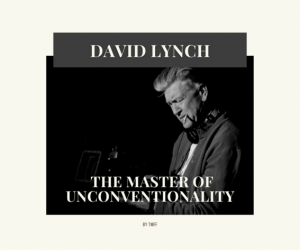It was always going to be an uphill battle for Lord of the Rings – The Rings of Power. While not necessarily following up on one of the most beloved fantasy franchises out there, it was going to be its most recent iteration since the lukewarmly received The Hobbit trilogy. Then there was the fact that it was based off a very small part of Tolkien’s writings, which meant that licenses were not all quite there. And finally, the expectations were sky high after it was confirmed that it would be the most expensive TV series in the history of TV series. So, rather than reviewing the whole thing – you can find many of those, mostly either bashing it or praising it to high heavens – I decided to take a more balanced view.
What it gets right
Obviously, the visuals. I feel like the praise for the breathtaking imagery is not necessary, as it was quite expected given the price tag. Also, it’s the one thing that even those hating on the show do acknowledge – it looks wonderful. Whether it’s one of the scenes in the Elven lands, the splendour of Numenor or simply a sunrise in the middle of nature, The Rings of Power looks flawless.
What I also found to be great is the pacing and how the mupltiple story arcs interact and eventually come together, either directly or indirectly. Compared to House of Dragons, which feels more crafted for the diminishing attention spans of today’s audiences, The Rings of Power’s pacing feels more reminiscent of the Lord of the Rings trilogy. It takes more time to soak in the beauty of the landscape, character interactions and setting of the stage. It doesn’t really jump straight into dramatic action and fights, which bored quite a lot of people within the first two-three episodes. But I do think that this is actually one of its key strengths – because ultimately, it does go into breakneck action and dramatic moments within its final few episodes.
The way it constructs the plot, and its reliance on using red herrings, especially in its hints as to who might be Sauron, was one of its highlights. And it does so with plenty of patience, not exactly rushing the audience to conclusions but throwing hints here and there along the way. Of course, here’s where its loose dependence on some Tolkien material actually works to its advantage. Since it’s not a word-for-word adaptation of a clear source of material, it can keep even the most knowledgeable fans guessing. Naturally, it does take its series of liberties – some due to the lack of coverage by the purchased licenses – but for the most part, this is a positive element of how the plot is constructed.
What it gets wrong
First of all, there was a significant amount of backlash with regard to some of the casting and character decisions in The Rings of Power. Making a point out of the idea that Tolkien’s writings are largely based off folklore from the British Isles, many have hated the show for casting black actors in the roles of elves and hobbits. This argument feels childish, to say the least – because the Tolkien lore includes creatures such as dragons, orcs and talking trees, which all seem fine from the point of view of those concerned with historical accuracy, but one black elf is too much. Others are also concerned by other trivial matters – such as not all elves having long white hair and looking like Legolas – but again, each interpretation will have its own ways. And I didn’t see this being an issue in the adaptation of the Harry Potter books, for instance – with every film pretty much having its own approach to costumes and character styles. So, to be honest, I don’t really get all the hate with regard to this.
What I do get, and I will complain about myself, is related to some of the writing and character development. Some dialogues, considering that the writers were undoubtedly extremely well paid, are very poor – borderline childish. And some characters are simply not that well constructed or utilised. For instance, Galadriel is one of the central characters, as it is ultimately about the quest that she inspires against a threat that nobody else seems to see for a while. And for a character who had been plotting her revenge for several hundreds of years, one can sympathise with her blunt approach. However, it does get excessive after a point and reveals several missed opportunities to develop her character and break free of the two-three defining traits that are emphasised again and again. Many fans have labelled Galadriel as way more unlikeable than the main antagonist. I don’t necessarily see that as a problem – rather, as an interesting take that negates the traditional good vs evil boundaries. Rather, I just see it as a missed opportunity to properly develop such a central and interesting character. And the same rings true for another one of the Elves, namely High King Gil-galad. Tolkien paints him as the last great warrior king of the Elves, who fought valiantly against the forces of evil – yet the show doesn’t really focus on him all that much. Again, he is reduced to one or two basic character traits – and he is mostly portrayed as a sneaky politician. Maybe also limited by the dialogue or the scope of the first season, but I can’t help feeling that quite a few of the characters missed the mark.
















